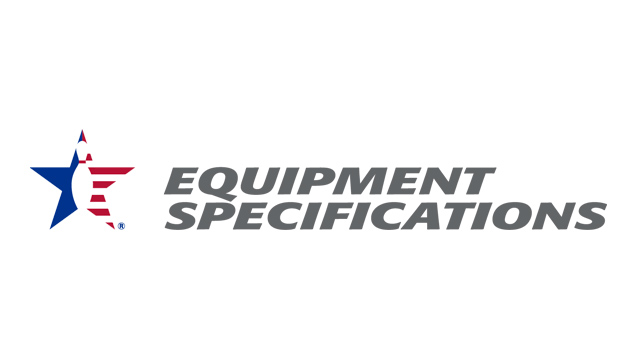Preliminary USBC research shows string pinsetter pinfall statistically different
January 06, 2021

ARLINGTON, Texas - The United States Bowling Congress released a preliminary research report as part of a comprehensive scoring study of string pinsetters. A full data report is published on BOWL.com. Click HERE to see it now.
The research data shows string pinsetters yield a lower strike percentage and leave a higher percentage of multi-pin spare combinations, compared to traditional free-fall machines. The data comes from USBC's Bowlscore machine, which analyzes pin flight and pinfall from thousands of automated shots across specific entry angles and offsets.
Key findings from the preliminary string pinsetter data include:
* Average strike percentage down a combined 6.9% across all entry angles tested
* Largest decrease in strike percentage occurred on light-pocket hits
* Multi-pin spare combinations were up across nearly all entry angles
* String pinsetter pinfall is statistically different overall compared to traditional free-fall pinsetters
USBC started a comprehensive research study on string pinsetter scoring earlier this year at the International Training and Research Center. The study involves the installation and testing of multiple string pinsetters, with testing continuing through 2021. String pinsetters currently are non-approved equipment and may not be used in USBC-certified competition, including USBC-certified leagues and tournaments.
"USBC has been in the process of researching string pinsetters for several months, and it will require continued study through 2021 to understand the variables impacting scoring for these machines," USBC Executive Director Chad Murphy said. "We felt it was important to release preliminary research, so stakeholders can see the statistical data differences from free-fall machines. There is more research to be done before USBC can take a position related to string pinsetter certification or standards."
Future aspects of USBC's string pinsetter research will include spare conversion testing using USBC's Enhanced Automated Robotic Launcher (E.A.R.L.), as well as league and tournament simulations. USBC will study design variables in the machines, including, but not limited to, pin deck and pit area, string composition and pin evaluation.
"If USBC does explore a certification standard for string pinsetters in the future, there could be a wide range of manufacturing or installation specifications to consider," Murphy said. "The research project has just started, but we will understand the issues better by the end of next year."
USBC plans to publish full study results in 2022. However, the results may or may not provide conclusive data to support a position on the certification of string pinsetters.
For more information on equipment specifications, visit BOWL.com/EquipAndSpecs.
The research data shows string pinsetters yield a lower strike percentage and leave a higher percentage of multi-pin spare combinations, compared to traditional free-fall machines. The data comes from USBC's Bowlscore machine, which analyzes pin flight and pinfall from thousands of automated shots across specific entry angles and offsets.
Key findings from the preliminary string pinsetter data include:
* Average strike percentage down a combined 6.9% across all entry angles tested
* Largest decrease in strike percentage occurred on light-pocket hits
* Multi-pin spare combinations were up across nearly all entry angles
* String pinsetter pinfall is statistically different overall compared to traditional free-fall pinsetters
USBC started a comprehensive research study on string pinsetter scoring earlier this year at the International Training and Research Center. The study involves the installation and testing of multiple string pinsetters, with testing continuing through 2021. String pinsetters currently are non-approved equipment and may not be used in USBC-certified competition, including USBC-certified leagues and tournaments.
"USBC has been in the process of researching string pinsetters for several months, and it will require continued study through 2021 to understand the variables impacting scoring for these machines," USBC Executive Director Chad Murphy said. "We felt it was important to release preliminary research, so stakeholders can see the statistical data differences from free-fall machines. There is more research to be done before USBC can take a position related to string pinsetter certification or standards."
Future aspects of USBC's string pinsetter research will include spare conversion testing using USBC's Enhanced Automated Robotic Launcher (E.A.R.L.), as well as league and tournament simulations. USBC will study design variables in the machines, including, but not limited to, pin deck and pit area, string composition and pin evaluation.
"If USBC does explore a certification standard for string pinsetters in the future, there could be a wide range of manufacturing or installation specifications to consider," Murphy said. "The research project has just started, but we will understand the issues better by the end of next year."
USBC plans to publish full study results in 2022. However, the results may or may not provide conclusive data to support a position on the certification of string pinsetters.
For more information on equipment specifications, visit BOWL.com/EquipAndSpecs.





